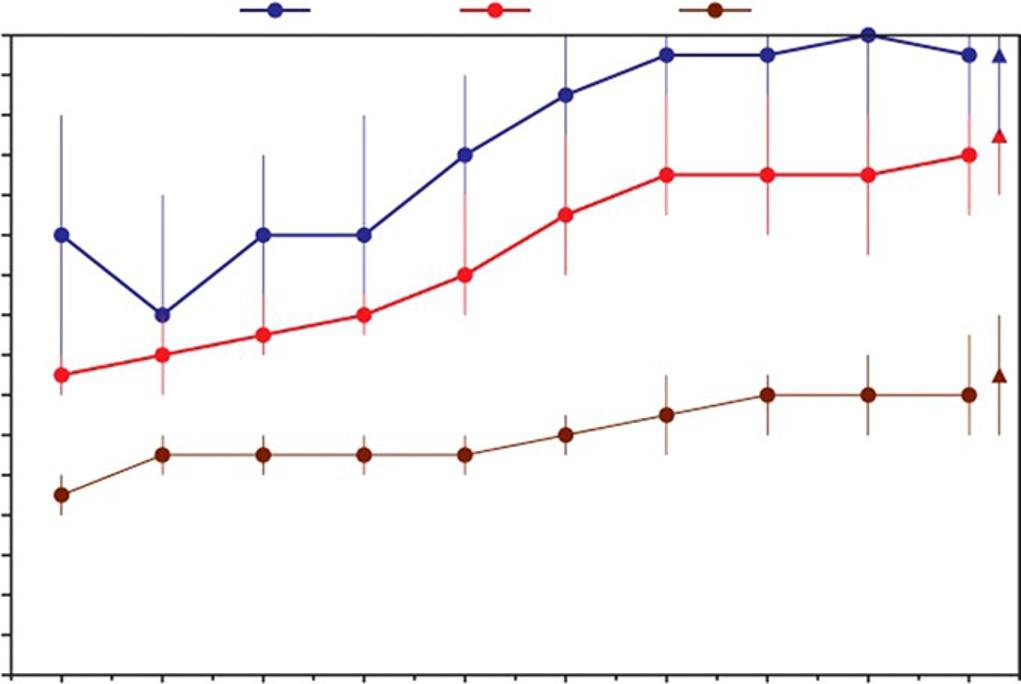Sub-SeasonaltoSeasonalPrediction:TheGap BetweenWeatherandClimateForecastingAndrewW. Robertson
https://ebookmass.com/product/sub-seasonal-to-seasonalprediction-the-gap-between-weather-and-climate-forecastingandrew-w-robertson/
Instant digital products (PDF, ePub, MOBI) ready for you
Download now and discover formats that fit your needs...
What to Sow, Grow and Do: A Seasonal Garden Guide 1st Edition Benjamin Pope
https://ebookmass.com/product/what-to-sow-grow-and-do-a-seasonalgarden-guide-1st-edition-benjamin-pope/ ebookmass.com
Cupid's Love (Seasonal Paranormal and Fantasy Romances Book 3) Amelia Shaw
https://ebookmass.com/product/cupids-love-seasonal-paranormal-andfantasy-romances-book-3-amelia-shaw/
ebookmass.com
Extreme Weather Forecasting Marina Astitha
https://ebookmass.com/product/extreme-weather-forecasting-marinaastitha/ ebookmass.com
It's Time to Talk about Race at Work: Every Leader's Guide to Making Progress on Diversity, Equity, and Inclusion Kelly Mcdonald
https://ebookmass.com/product/its-time-to-talk-about-race-at-workevery-leaders-guide-to-making-progress-on-diversity-equity-andinclusion-kelly-mcdonald/ ebookmass.com
Understanding Pathophysiology u2013 E-Book
https://ebookmass.com/product/understanding-pathophysiology-e-book/
ebookmass.com
Splinter Salem Part Two Wayne Hill
https://ebookmass.com/product/splinter-salem-part-two-wayne-hill/
ebookmass.com
Paying for Pollution: Why a Carbon Tax Is Good for America Gilbert Metcalf
https://ebookmass.com/product/paying-for-pollution-why-a-carbon-taxis-good-for-america-gilbert-metcalf/
ebookmass.com
Wild Cowboy Wolf Kait Ballenger
https://ebookmass.com/product/wild-cowboy-wolf-kait-ballenger-2/
ebookmass.com
World History, Volume I: To 1800 8th Edition, (Ebook PDF)
https://ebookmass.com/product/world-history-volume-i-to-1800-8thedition-ebook-pdf/
ebookmass.com
McGraw-Hill handbook of English Harry Shaw [Shaw
https://ebookmass.com/product/mcgraw-hill-handbook-of-english-harryshaw-shaw/
ebookmass.com
SUB-SEASONALTOSEASONAL PREDICTION
SUB-SEASONALTO SEASONAL PREDICTION
TheGapBetweenWeatherand ClimateForecasting
Editedby
ANDREW W.ROBERTSON
SeniorResearchScientist,InternationalResearchInstituteforClimateandSociety(IRI), EarthInstitute,ColumbiaUniversity,NY,UnitedStates
FREDERIC VITART
SeniorResearchScientist,EuropeanCentreforMedium-RangeWeatherForecasts(ECMWF),UnitedKingdom
Elsevier
Radarweg29,POBox211,1000AEAmsterdam,Netherlands
TheBoulevard,LangfordLane,Kidlington,OxfordOX51GB,UnitedKingdom 50HampshireStreet,5thFloor,Cambridge,MA02139,UnitedStates
Copyright # 2019ElsevierInc.Allrightsreserved.
Nopartofthispublicationmaybereproducedortransmittedinanyformorbyanymeans,electronicor mechanical,includingphotocopying,recording,oranyinformationstorageandretrievalsystem,without permissioninwritingfromthepublisher.Detailsonhowtoseekpermission,furtherinformationaboutthe Publisher’spermissionspoliciesandourarrangementswithorganizationssuchastheCopyrightClearance CenterandtheCopyrightLicensingAgency,canbefoundatourwebsite: www.elsevier.com/permissions.
ThisbookandtheindividualcontributionscontainedinitareprotectedundercopyrightbythePublisher (otherthanasmaybenotedherein).
Notices
Knowledgeandbestpracticeinthisfieldareconstantlychanging.Asnewresearchandexperiencebroaden ourunderstanding,changesinresearchmethods,professionalpractices,ormedicaltreatmentmaybecome necessary.
Practitionersandresearchersmustalwaysrelyontheirownexperienceandknowledgeinevaluatingandusing anyinformation,methods,compounds,orexperimentsdescribedherein.Inusingsuchinformationormethods theyshouldbemindfuloftheirownsafetyandthesafetyofothers,includingpartiesforwhomtheyhavea professionalresponsibility.
Tothefullestextentofthelaw,neitherthePublishernortheauthors,contributors,oreditors,assumeany liabilityforanyinjuryand/ordamagetopersonsorpropertyasamatterofproductsliability,negligenceor otherwise,orfromanyuseoroperationofanymethods,products,instructions,orideascontainedinthe materialherein.
LibraryofCongressCataloging-in-PublicationData
AcatalogrecordforthisbookisavailablefromtheLibraryofCongress
BritishLibraryCataloguing-in-PublicationData
AcataloguerecordforthisbookisavailablefromtheBritishLibrary
ISBN:978-0-12-811714-9
ForinformationonallElsevierpublicationsvisitour websiteat https://www.elsevier.com/books-and-journals
Publisher: CandiceJanco
AcquisitionEditor: LauraKelleher
EditorialProjectManager: EmilyThomson
ProductionProjectManager: PaulPrasadChandramohan
CoverDesigner: ChristianBilbow
TypesetbySPiGlobal,India
Contributors
S.Abhilash DepartmentofAtmospheric Science,CochinUniversityofScience andTechnology,Kochi,India
Min-SeopAhn SchoolofEarthEnvironment Sciences,SeoulNationalUniversity,Seoul, RepublicofKorea
WalterE.Baethgen InternationalResearch InstituteofClimateandSociety(IRI),Columbia University,Palisades,NY,UnitedStates
GianpaoloBalsamo EuropeanCentrefor Medium-RangeWeatherForecasts,Reading, UnitedKingdom
JuanBazo RedCrossRedCrescentClimate Centre,TheHague,Netherlands
BarbaraBrown ResearchApplications Laboratory,NationalCenterforAtmospheric Research,Boulder,CO,UnitedStates
GilbertBrunet MeteorologicalResearch Division,EnvironmentandClimateChange Canada,Dorval,QC,Canada
RobertoBuizza ScuolaSuperioreSant’Anna, Pisa,Italy;ECMWF,Reading,UnitedKingdom
AmyButler CooperativeInstituteforResearch inEnvironmentalSciences(CIRES)/National OceanicandAtmosphericAdministration (NOAA),Boulder,CO,UnitedStates
BarbaraCasati EnvironmentandClimate ChangeCanada,Montreal,QC,Canada
P.Chang DepartmentofAtmospheric SciencesandDepartmentofOceanography, TexasA&MUniversity,CollegeStation,TX, UnitedStates
AndrewCharlton-Perez Departmentof Meteorology,UniversityofReading,Reading, UnitedKingdom
RajibChattopadhyay IndianInstituteof TropicalMeteorology,Pune,India
MatthieuChevallier CNRM,Universitede Toulouse,MeteoFrance,CNRS,Toulouse, France;DivisionofMarineForecasting andOceanography,MeteoFrance,Toulouse, France
CaioA.S.Coelho CentrodePrevisa ˜ odeTempo eEstudosClima ´ ticos,InstitutoNacionalde PesquisasEspaciais,CachoeiraPaulista,SP, Brazil
ErinCoughlandePerez RedCrossRed CrescentClimateCentre,International ResearchInstituteforClimateandSociety, ColumbiaUniversity,Palisades,NY,United States;InstituteforEnvironmentalStudies, VUUniversityAmsterdam,Netherlands
ChristopherCunningham NationalCentre forMonitoringandEarlyWarningofNatural Disasters(CEMADEN),SaoJosedosCampos, Brazil
RutgerDankers MetOffice,Exeter,United Kingdom
MichaelDeFlorio NASAJetPropulsion Laboratory/CaliforniaInstituteofTechnology, Pasadena,CA,UnitedStates
MatthewDeGennaro FloridaInternational University,Miami,UnitedStates
MathieuDestrooper GermanRedCross, Berlin,Germany
PaulA.Dirmeyer CenterforOcean-LandAtmosphereStudies,GeorgeMason University,Fairfax,VA,UnitedStates
GiovanniDolif NationalCentrefor Monitoring andEarlyWarningofNatural Disasters(CEMADEN),SaoJosedosCampos, Brazil
DanielaI.V.Domeisen Institutefor AtmosphericandClimateScience,ETHZ € urich, Zurich,Switzerland
RobynDuell AustralianBureauof Meteorology,Melbourne,VIC,Australia
EmanuelDutra InstitutoDomLuiz,IDL, FacultyofSciences,UniversityofLisbon, Lisbon,Portugal
MichaelB.Ek NationalCenterforAtmospheric Research,Boulder,CO,UnitedStates
LauraFerranti EuropeanCentrefor Medium-RangeWeatherForecasts(ECMWF), Reading,UnitedKingdom
JorgenFrederiksen CSIROOceansand Atmosphere,Aspendale,Victoria,Australia
ChaimGarfinkel FreddyandNadineHermann InstituteofEarthScience,HebrewUniversity ofJerusalem,Jerusalem,Israel
PierreGentine ColumbiaUniversity, NewYork,NY,UnitedStates
EdwinP.Gerber CourantInstituteof MathematicalSciences,NewYorkUniversity, NewYork,NY,UnitedStates
MichaelGhil DepartmentofAtmospheric andOceanicSciences,Universityof CaliforniaatLosAngeles,LosAngeles, CA,UnitedStates;GeosciencesDepartment andLaboratoiredeMeteorologie Dynamique(CNRSandIPSL),Ecole NormaleSuperieureandPSLResearch University,Paris,France
HelgeGoessling AlfredWegenerInstitutefor PolarandMarineResearch,Bremerhaven, Germany
BrianGolding MetOffice,Exeter,United Kingdom
AndreasGroth DepartmentofAtmospheric andOceanicSciences,Universityof CaliforniaatLosAngeles,LosAngeles,CA, UnitedStates
VirginieGuemas CNRM,Universitede Toulouse,MeteoFrance,CNRS,Toulouse, France;BarcelonaSupercomputingCentre, Barcelona,Spain
PeterHitchcock EcolePolytechniqe,Saclay, Paris,France
DebraHudson BureauofMeteorology, Melbourne,Australia
CharlesJones UniversityofCalifornia,Santa Barbara,(UCSB),SantaBarbara,CA,United States
SusmithaJoseph IndianInstituteofTropical Meteorology,Pune,India
ThomasJung AlfredWegenerInstituteforPolar andMarineResearch,Bremerhaven,Germany
In-SikKang IndianOceanOperational OceanographicResearchCenter,SOED/ SecondInstituteofOceanography,Hangzhou, China;CenterofExcellenceofClimateChange Research,KingAbdulazizUniversity,Jeddah, SaudiArabia
AlexeyYu.Karpechko FinnishMeteorological Institute,Helsinki,Finland
DmitriKondrashov Departmentof AtmosphericandOceanicSciences,University ofCaliforniaatLosAngeles,LosAngeles,CA, UnitedStates
PhaniM.Krishna IndianInstituteofTropical Meteorology,Pune,India
ChristopheLavaysse UniversityofGrenoble Alpes,CNRS,IRD,G-INP,IGE,Grenoble,France
HaiLin EnvironmentandClimateChange Canada,Dorval,Quebec,Canada
RachelLowe DepartmentofInfectiousDisease Epidemiology,CenterfortheMathematical ModellingofInfectiousDiseases,London SchoolofHygieneandTropicalMedicine, London, UnitedKingdom;ClimateandHealth Programme,BarcelonaInstituteforGlobal Health(ISGLOBAL),Barcelona,Spain
VictorMarchezini NationalCentrefor MonitoringandEarlyWarningofNatural Disasters(CEMADEN),SaoJosedosCampos, Brazil
Nade ` geMartiny CenterdeRecherchesde Climatologie,Biogeosciences,UMR6282 CNRS,UniversiteBourgogneFranche-Comte, Besanc ¸on,France
Franc ¸ oisMassonnet GeorgesLemaı ˆtreCentre forEarthandClimateResearch,EarthandLife Institute,UniversitecatholiquedeLouvain, Louvain-la-Neuve,Belgium;Barcelona SupercomputingCentre,Barcelona,Spain
AmandaC.Maycock SchoolofEarthand Environment,UniversityofLeeds,Leeds, UnitedKingdom
JohnMethven DepartmentofMeteorology, UniversityofReading,Reading,United Kingdom
BrianMills MeteorologicalResearchDivision, EnvironmentandClimateChangeCanada, Waterloo,ON,Canada
MarionMittermaier UKMetOffice,Exeter, UnitedKingdom
HiroakiMiura DepartmentofEarthand PlanetaryScience,UniversityofTokyo,Tokyo, Japan
VincentMoron Aix-MarseilleUniv,CNRS,IRD, INRA,CollFrance,CEREGE,AixenProvence, France
TetsuoNakazawa TyphoonResearch Department,MeteorologicalResearchInstitute, JapanMeteorologicalAgency,Tokyo,Japan
HannahNissan InternationalResearchInstitute forClimateandSociety(IRI),Columbia University,Palisades,NY,UnitedStates
D.R.Pattanaik IndiaMeteorological Department,NewDelhi,India
JoanneRobbins MetOffice,Exeter,United Kingdom
AndrewW.Robertson InternationalResearch InstituteforClimateandSociety(IRI),Columbia University,Palisades,NY,UnitedStates
PascalRoucou CenterdeRecherchesde Climatologie,Biogeosciences,UMR6282 CNRS,UniversiteBourgogneFranche-Comte, Besanc ¸on,France
A.K.Sahai IndianInstituteofTropical Meteorology,Pune,India
R.Saravanan DepartmentofAtmospheric SciencesandDepartmentofOceanography, TexasA&MUniversity,CollegeStation,TX, UnitedStates
JuanPabloSarmiento FloridaInternational University,Miami,UnitedStates
StefanSiegert DepartmentofMathematics, UniversityofExeter,Devon,UnitedKingdom
MichaelSigmond CanadianCentrefor ClimateModellingandAnalysis,Environment andClimateChangeCanada,Victoria,BC, Canada
AmberSilver UniversityofAlbany,NewYork, UnitedStates
IslaSimpson ClimateandGlobalDynamics Laboratory,NationalCenterforAtmospheric Research,Boulder,CO,UnitedStates
RoopSingh RedCrossRedCrescentClimate Centre,TheHague,Netherlands
Seok-WooSon SchoolofEarthand EnvironmentalSciences,SeoulNational University,Seoul,RepublicofKorea
CristianaStan GeorgeMasonUniversity, Fairfax,VA,UnitedStates
DavidB.Stephenson Departmentof Mathematics,UniversityofExeter,Devon, UnitedKingdom
DavidStraus GeorgeMasonUniversity, Fairfax,VA,UnitedStates
AneeshSubramanian AOPP,Departmentof Physics,UniversityofOxford,Oxford, UnitedKingdom;ScrippsInstitutionof Oceanography,UCSD,SanDiego,CA,United States
YuheiTakaya MeteorologicalResearch Institute,JapanMeteorologicalAgency, Ibaraki,Japan
RafaelTerra DepartmentofFluidMechanics andEnvironmentalEngineering,Schoolof Engineering,UniversidaddelaRepu ´ blica, Montevideo,Uruguay
MadeleineC.Thomson International Research InstituteforClimateandSociety(IRI), ColumbiaUniversity,Palisades,NY,United States
MichaelK.Tippett ColumbiaUniversity,New York,NY,UnitedStates
AdrianM.Tompkins AbdusSalam InternationalCenterforTheoreticalPhysics (ICTP),Trieste,Italy
ZoltanToth NOAA,Boulder,CO,United States
RachelTrajber FloridaInternational University,Miami,UnitedStates
FredericVitart EuropeanCentreforMediumRangeWeatherForecasts(ECMWF),Reading, UnitedKingdom
LeiWang InstituteofAtmosphericSciences, FudanUniversity,Shangai,People’sRepublicof China
AndrewWatkins AustralianBureauof Meteorology,Melbourne,VIC,Australia
LaurieWilson EnvironmentandClimate ChangeCanada,Montreal,QC,Canada
StevenJ.Woolnough NationalCentrefor AtmosphericScience,UniversityofReading, Reading,UnitedKingdom
Preface
TheWorldMeteorologicalOrganization (WMO)launchedtheSub-seasonalto SeasonalPredictionProject(S2S)inNovember2013asacollaborationbetweenthe WorldWeatherResearchProgramme (WWRP)andtheWorldClimateResearch Programme(WCRP).Theprimarygoalsof thisprojectwereimprovingforecastskill andunderstandingthedynamicsandclimatedriversontheS2Stimescale(i.e.,from 2weekstoanentireseason).TheS2SImplementationPlanwasdevelopedbyagroup thatincludedrepresentativesfromWWRP/ THORPEX(TheObservingSystemResearch andPredictabilityExperiment),WCRP,the CommissionforBasicSystems(CBS),and theCommissionforClimatology(CCl);it givesahighprioritytoestablishingcollaborationandcoordinationbetweenoperational centersandtheresearchcommunity.TheS2S projecthasaspecialemphasisonhighimpactweatherevents,witha“Ready-SetGo”approach,featuringcoordination amongoperationalcentersandpromoting theuptakeofS2Sproductsandinformation bytheapplicationcommunities.Thisprinciplelinksstronglytotheseamlessprediction approachintheWMOresearchcommunity.
ThegrandchallengeofacceleratingprogressinEarth-systemobservation,analysis, andpredictioncapabilitieswaspostulated by Shapiroetal.(2010).Inthiscontext,seamlesspredictionwasintroducedforS2Spredictiontospantheboundarybetween weatherandclimate(Brunetetal.,2010). Theseauthorsextendedtheconceptofseamlessnessbeyondtherealmofatmospheric predictionstoincludetheconsiderationof
biophysicalandsocioeconomicfactorspertinenttosuccessfuldecision-making.
AttheWorldWeatherOpenScienceConference(WWOSC)in2014,seamlesspredictionwasfeaturedprominentlytocover timescalesfromminutestomonths,consideringallcompartmentsoftheEarth-system, includinghydrologyandairquality,and linkingtousers,applications,andsocialsciences.Seamlessnessisausefulconcepttoaddresstheneedforinformationforusers, stakeholders,anddecision-makersthatis smoothandconsistentacrosstheartificial barriersthatexistacrosstimescalesand spacescales,observingsystems,modeling approaches,disciplines,andcommunities. TheoutcomeoftheWWOSCledtothedevelopmentoftheWWRPImplementationplan, inwhichtheS2Sprojectisaveryclearexampleofsuchseamlesscollaborationbetween WWRPandWCRP.
AstheWCRPembarksonanewstrategic eraofmoreintegrativesciencetorespondto theinternationalclimateagendatowardasocietyresilienttoclimatevariabilityand change,theS2Sprojectrepresentsaveryconcreteexampleofhowdiverseresearchcommunitiescantackleissuesofcommon interestanddeliververytangibleandmeasurableoutcomesinashorttimeframe.
InthecontextofWMO,seamlesspredictionconsidersnotonlyallcompartmentsof theEarth-system,butalsoalldisciplines oftheweather-climate-water-environment valuecycle(monitoringandobservation, models,forecasting,end-userproducts,disseminationandcommunication,perception andinterpretation,decision-making,and
feedbacktoresearchrequirements)todeliver tailoredweather,climate,water,andenvironmentalinformationcoveringminutes tocenturiesandspanningthelocalto globalscale.
PhaseIoftheS2SProject(endingin2018) hasaccomplishedseveralmajorachievementsandimportantmilestones,butthere isalsoaclearrecognitionthatmuchoftheresearch,productdevelopment,anduptakeby theapplicationcommunitiesarestillintheir infancy.MuchremainstobedonetofullyrealizethevisionofS2Stimescaleprediction, bothintermsofimprovingtheskillofthe forecasts,aswellascreatingforecastproductstohelpinformuserdecisionsinthe rangeof2weekstoaseason.Theseissues willbethefocusofPhaseIIoftheS2Sproject.
Thisspecialbookaimsatsummarizing somekeyprogressachievedduringPhaseI oftheS2SProject.PartIintroducesS2Sin thebroadercontextoflimitsofweatherforecasthorizonandthepredictabilityof weatherwithinclimateandplanetarywave dynamics.PartIIprovidesasystematicreviewofpotentialsourcesofpredictability, includingtheMadden-JulianOscillation (MJO),variousteleconnections,land,ocean, seaice,andstratosphere.PartIIIcoverssome importantimplementationaspectsofS2S predictionsystems,ensemblegeneration, modeldevelopmentissues,recalibration, andmultimodelcombinationandverification.Finally,PartIVillustratesthesocietal benefitsofsuchresearchtoimprovethepredictionofextremesandtoenhancepreparednessforhumanitarianactions, communicationanddisseminationofproducts,seamlesspredictionofmonsoons,sectoraldecisionswithprobabilistic approaches,andclimateimpactsonhealth. ProgressmadetodateinPhaseIoftheS2S Projectispavingthewayforapilottransition ofsomeofthoseresearchoutcomesintooperationsinaseamlessfashion,whichwillbe thefocusofPhaseIIoftheproject(whichis
nowapprovedbytherespectivegoverning bodiesofWWRPandWCRPandExecutive CouncilofWMO).PhaseIIwillenhance theS2SdatabaseasabackbonetoS2Sresearchandfollowtheentirevaluechainto alsostrengthenuserapplicationsand decision-making.Fundamentalresearchto improvepredictionskillintheS2Stime rangewillbepursuedonMJOprediction andteleconnections;land,ocean,andstratosphereinitializationandconfiguration; ensemblegeneration;andtheroleofatmosphericcomposition,capitalizingfurtheron theverysuccessfulcollaborationbetween theweatherandclimateresearch communities.
WMOisextremelygratefulforthetremendouscontributionoftheS2Scommunity,inparticulartheS2SSteering Committee,itsco-chairsFredericVitartfrom theEuropeanCentreforMedium-range WeatherForecasting(ECMWF)andAndrew RobertsonfromtheInternationalResearch Institute(IRI),ColumbiaUniversityandthe InternationalCoordinationOfficehostedby theKoreaMeteorologicalAdministration (KMA),inimplementingthisproject.Italso acknowledgesthefinancialandin-kindsupportprovidedbynumerouscountriesand institutionsduringPhaseI.Noteworthyis alsothecrucialsupportoftheS2Sdatabase providedbyECMWFandtheChinaMeteorologicalAdministration(CMA).
PhaseIIoftheS2Sprojectiscertainly somethingtolookforwardto,andthework andsupportoftheinternationalcommunity areverymuchappreciatedandencouraged.
Co-authors: PaoloRuti(ChiefWorldWeather ResearchProgramme,WMO), MichelRixen(SeniorScientificOfficer WorldClimateResearchProgramme,WMO) EstelledeConing(ScientificOfficer, WorldWeatherResearch Programme,WMO)
Acknowledgements
Theeditorswouldliketoexpresstheirdeepappreciationtoallthechapterauthorsfortheir enthusiasmandwillingnesstocontributetheirknowledgeandexperienceacrossthediverse aspectsoftheS2Sscience,modelingandsocietalapplications,withoutwhichthisbookwould nothavebeenpossible.Inaddition,thecommentsontheoriginalbookproposalfromseveral anonymousreviewershelpedsubstantiallyimprovetheoriginalconcept.Wealsowishto thankthepublishersandeditorsatElsevierforproposingthisvolume,andfortheirguidance, technicalassistanceandpatienceinbringingthisprojecttofruitionoveranalmosttwoyear period,inparticularEmilyThomsonandLouisaHutchins.Finally,theeditorswouldliketo thanktheIRIandECMWFrespectivelyfortheirsupport;AWRacknowledgesthesupportof afellowshipfromColumbiaUniversity’sCenterforClimateandLife.
FredericVitart*,AndrewW.Robertson†
Arapidevolutionistakingplaceinweatherandclimateprediction(Shapiroetal.,2010; Baueretal.,2015).Historically,therehasbeenaclearseparationbetweenweatherandclimate prediction,despitethefactthatbothusesimilarnumericaltools. Weatherprediction refersto thepredictionofdailyweatherpatternsfromafewdaysuptoabout2weeksinadvance, whereas climateforecasting referstothepredictionofclimatefluctuationsaveragedovera seasonandbeyond.1 Thistime-scaleseparationbetweenweatherandclimateprediction hasbeenaccompaniedbyadivideintheweatherandclimateresearchcommunities,for
1 Theterms forecasting and prediction areusedsynonymouslyhere;insomecases, forecasting ispreferredinthe contextofforecastuseandverification,while prediction ismoregeneral.
4 1.INTRODUCTION:WHYSUB-SEASONALTOSEASONALPREDICTION(S2S)?
thehistoricalreasonsdescribedlaterinthischapter.However,aconvergenceistakingplace, spurredbythegrowingrealizationthatweatherandclimatetakeplaceonacontinuumof timeandspacescales.Coherentphenomenaonarangeofscalesalongthiscontinuumlead topredictabilityonscalesfromsubdaily,toweeks,months,years,decades,andbeyond (Hoskins,2012).Thesub-seasonaltoseasonaltimerange(abbreviatedas S2S),thefocusof thisbook,sitswheretheweatherandclimatescalesmeetandcorrespondstopredictionsbeyond2weeks,butlessthanaseason.Itisalsoakeytimerangefor seamless weather/climate prediction,inwhichasinglemodelisusedtomakeforecastsallthewayfromweatherscales toseasonalorlongerclimatescalesor,inamorelimitedinterpretation,thattheunderlying predictabilityisseamlessacrosstimescales,evenifpragmatismdictatestheuseofdifferent modelsforforecastingatdifferentleadtimes(Brunetetal.,2010).Wenotethattheterm S2S hasrecentlybeenusedmorebroadlytoincludeseasonalforecastsupto12monthsahead (NAS,2016).
Objectiveweatherandclimateforecastingcanbedividedintotwobranches:empirical(or statistical)forecastingandnumericalweather/climatepredictionwithdynamicalmodels. Empiricalforecastinghasbeenpracticedinoneformorotherformorethanahundredyears, ifnotthousandsofyears(e.g., Taub,2003);itconsistsofmakingforecastsbasedonpastexperienceor,inthemodernera,byusingobservationaldataofcurrentandpaststatesofthe weatherorclimatetofit(ortrain)astatisticalmodel.Empiricalmethodscanbesimple(e.g., persistence,wherethecurrentweather/climateispredictedtopersistforacertainperiodof time)ormoresophisticated(e.g.,regressionmodelsordiscriminantanalysis).Forexample, theanalogmethodofweatherforecastinginvolvesexaminingtoday’sstateoftheatmosphere andfindingdaysinthepastwithsimilarweatherpatterns(analogs).Theforecasterthen wouldpredicttheweatherbasedonthesepastanalogdays.Correspondingly,ananalogseasonalclimateforecastmightbebasedonpastyearswithsimilarphasesoftheElNin ˜ o— SouthernOscillation(ENSO).
Numericalweatherandclimateprediction,ontheotherhand,usesmathematical(dynamical)modelsoftheatmosphereorEarthsystemtopredicttheweatherortheclimate.The mathematicalmodelsusedforshort-rangeweatherpredictionorlong-rangeclimatepredictionarebasedonthesamephysicalprinciplesandsetofequations,calledthe primitive equations, withtheprimarydistinctionbeingthatclimatemodelsneedtoincludeadditional componentsoftheclimatesystem,suchastheocean,dependingontheforecastleadtime beingtargeted.Theseequationsareusedtoevolvethedensity,pressure,andpotentialtemperaturescalarfieldsandtheairvelocity(wind)vectorfieldoftheatmosphereeitherona latitude-longitudegridorinspectralspace,throughtime.Theeffectsofsubgrid-scaleprocesses,includingconvection,radiation,andinteractionswiththeunderlyingsurface,are nottreatedexplicitlybutinsteadareparameterizedintermsoftheresolved-scalevariables. Althoughempiricalmethodscanbeusedforsub-seasonaltoseasonalprediction,thisbook focuseslargelyondynamicalnumericalpredictionmodels.
Webeginthisintroductorychapterwithabriefhistoryofdynamicalweatherandclimate prediction,togetherwiththeWorldMeteorologicalOrganization(WMO)programsthatwere createdtocoordinatetheseactivitiesandthatgavebirthtoS2S.Wethenintroducesubseasonaltoseasonalforecastingresearchandpractice,fromthediscoveryofS2Spredictabilitysources,improvementsinnumericalweatherprediction(NWP),developmentofseamless forecasting,andthedemandfromapplications.Thechapterconcludeswithasummaryofthe structureofthisbook.
1HISTORYOFNUMERICALWEATHERANDCLIMATE FORECASTING
Numericalweatherprediction(NWP)haditsrootsearlyinthe20thcentury,whenabetter understandingofatmosphericphysicsledtotheestablishmentoftheprimitiveequationsof theatmosphere(Abbe,1901; Bjerknes,1904).Thefirstnumericalweatherforecastwas attemptedin1922bytheEnglishscientistLewisFryRichardson,inareportcalled “WeatherPredictionbyNumericalProcess”;heperformedhisstudywhileworkingasanambulancedriverinWorldWarI.Inthispublication,hedescribedhowsmalltermsintheprognosticfluiddynamicalequationsgoverningatmosphericflowcouldbeneglected,andafinite differencingschemeintimeandspacecouldbedevised,tofindnumericalpredictionsolutions.Heconstructeda6-hourforecastofpressureattwopointsincentralEuropebyhand.It tookhimabout6weekstoproducethis6-hourforecast;unfortunately,itfalselypredicteda surgeinsealevelpressurewheninreality,thepressureremainedaboutthesame.Thenumberofcalculationsrequiredtoperformweatherforecastsissohugethatitwasonlywiththe adventofdigitalcomputersandthedevelopmentofnumericalmethodsthatweatherforecastinginrealtimebecamepossible.
Thefirstsuccessfulcomputerweatherforecastwasproducedin1950withtheENIAC (ElectronicNumericalIntegratorandComputer)digitalcomputer,takingalmost24hours tomakethe24-hourforecast(Charneyetal.,1950).Fromthere,Carl-GustavRossbyproduced thefirstoperationalweatherforecast(i.e.,routinepredictionsforpracticaluse)basedonthe barotropicequationinSeptember1954.NumericalweatherforecastingbeganshortlyafterwardonaregularbasisintheUnitedStates,andataroundthesametimeinothercountries. Formanyyears,weatherforecastswereissuedonlyfromasingleintegrationoftheatmosphericmodelfromthebestestimateoftheatmosphericinitialcondition.FollowingEdward Lorenz’sgroundbreaking1963paper“DeterministicNonperiodicFlow,”publishedin Journal oftheAtmosphericSciences, whichshowedhowsmallchangesintheinitialconditionscould leadtoverydifferentforecastsduetothenonlinearityoftheprimitiveequations,ensemble forecastsstartedtobeproducedoperationallyinthe1990s.Insteadofmakingasingleforecast ofthemostlikelyweatherpattern,aset(or ensemble)offorecastswereproduced,givingan indicationoftherangeofpossiblefuturestatesoftheatmosphere,andthustheuncertaintyof theforecast,stemmingfromimperfectknowledgeoftheinitialconditionsandshortcomings inmodelformulation.Today,ensembleweatherforecastsareinitializedusinglargenumbers ofperturbedinitialconditions,andthemodeloutputisoftenpresentedintheformof probabilities.
GettingthebestpossibleestimateoftheatmosphericinitialconditionsiscentraltoNWP, andadvancesinforecastskilloverthepast10yearshavecomeinroughlyequalpartsfrom improvingtheseestimatesanddevelopingmodels(Baueretal.,2015).Variousmethodsare usedtogatherobservationaldataforforecastinitialization(radiosondes,weathersatellites, andcommercialaircraftandshipreports).Theseobservationsaregenerallyirregularly spacedandcontainerrors,sotheyneedtobeprocessedtoperformqualitycontrolandobtain valuesatlocationsthatareusablebythemodel’smathematicalalgorithms;thisprocessis called dataassimilationandobjectiveanalysis. Thenthenumericalmodelcanpredicthowthe weatherwillevolvefromitsinitialstateasaninitialvalueproblem.
1.INTRODUCTION:WHYSUB-SEASONALTOSEASONALPREDICTION(S2S)?
Numericalweatherforecastinghasimprovedsignificantlysincethe1950sthankstoimprovedscientificknowledge,hugeimprovementincomputingcapacity,andtheadventof satellitedata.Computingpowerhasincreasedbyaboutanorderofmagnitudeevery5years sincethe1980s.Dataassimilationalgorithmsemploytheforecastmodelandusetheorderof 107 observationsperdaytoderiveinitialconditionsthatarephysicallyconsistent(Baueretal., 2015).Improvementsinforecastskillhavebeenobjectivelyandquantitativelyassessed againstverifyingobservations.Intherangeof3–10daysahead,skillhasincreasedbyabout 1dayperdecade,sothattoday’s10-dayforecastisasaccurateasthe7-dayforecastinthe early1980s,asshowninFig.1of Baueretal.(2015).ThepredictiveskillintheNorthern andSouthernhemispheresisalmostequaltodaythankstotheeffectiveuseofsatellitedata providingglobalcoverage.
Thefirstseasonalforecastsissuedbyagovernmentofficewereempirical,andtheywere probablythoseissuedbytheIndianMeteorologicalDepartment(IMD)inthe1880s;theyused Himalayansnowcoverasastatisticalpredictorforthesummermonsoon.TheworkofHenry BlanfordandSirGilbertWalker,bothearlydirectorsoftheIMDincolonialtimes,weremotivatedbythedevastatingdroughtsandfaminesinIndiainthelate19thcentury,which,ithas beenargued(Davis,2000),gavebirthtothemodernfieldoftropicalmeteorology.
Thefirstdynamicalclimatemodelwasdevelopedin1956byNormanPhillips,whodevelopedamathematicalmodelthatrealisticallydepictedmonthlyandseasonaltroposphericcirculationpatterns.FollowingPhillips’swork,severalgroupsbeganworkingtocreategeneral circulationmodels(GCMs)basedontheatmosphericprimitiveequationsonthesphere.This developmentcloselyparalleledthatofNWPmodels,butwithlowerhorizontalresolutionto enablelongersimulations,andwithparameterizationsstrictlyconservingmassandenergy necessaryforstudiesofseasonaltointerannualclimatevariabilityandclimatechange.The firstGCMthatcombinedbothoceanicandatmosphericprocesseswasdevelopedinthelate 1960sattheGeophysicalFluidDynamicsLaboratoryattheNationalOceanicandAtmosphericAdministration(NOAA).
Climatepredictabilitycomesfromtherelativelyslowevolution(i.e.,takingmonthsand evenlonger)oftheatmosphericlowerboundaryconditionssuchasseasurfacetemperature (SST),seaice,soilmoisture,andsnowcover.Forinstance,SSTanomaliesassociatedwithEl Ninooritsopposite,LaNina,canbepredictedafewmonthsinadvance(Barnstonetal., 2012),leadingtopredictabilityintheimpactoftheseanomaliesontheatmosphere,such asareductionoftropicalstormactivityintheAtlantic,orrainfallovermanypartsofthetropics,associatedwithElNino(Gray,1984; RopelewskiandHalpert,1987).However,thisimpactofSSTondailyweatherisnotdeterministic,andtheresultingpredictabilityinseasonal averagedweatherwascalled“predictabilityofthesecondkind”by Lorenz(1975).
Thisfundamentaldistinctionbetweenweatherandseasonalclimatepredictionledtothe introductionofprobabilisticconcepts—includingensembleprediction—intothelatterwell beforetheformer.Seasonalclimateforecastsare(orshouldbe)issuedintermsofchanges orshiftsinclimatologicalprobabilitydistributionofweatherparameterssuchastemperature andprecipitation;climateforecastingonseasonaltimescalesandlongerisnotabout predictingtheexactweatherseveralmonthsoryearsinadvance,butratheraboutpredicting futurechangesinitsprobabilitydistributionoverlargeaveragingtimeperiods(rangingfrom seasonstomultipledecades).TheimportanceofENSO-related,tropicalSSTanomaliesas boundaryforcingontheatmosphereledtothedevelopmentoftwo-tierseasonalforecasting
systems,consistingofseparatecomponentsfor(1)predictingtheevolutionoftropicalPacific SST,and(2)simulatingtheatmosphericresponseusingensemblesofatmosphericGCMsin multimodelcombination.Thistwo-tierapproachpopularizedtheparadigmofseasonalforecastingasaboundaryvalueproblem,anditwasusedinreal-timeseasonalclimateforecastingatseveralcenters,includingattheInternationalResearchInstituteforClimateandSociety (IRI)between1998and2016(Masonetal.,1999).Fundamentally,however,alldynamicalpredictionisaninitialvalueproblemfortheevolutionofthephenomenathathavepredictability ontherelevanttimescale(Hoskins,2012).
Asmentionedalready,climateandNWPmodelsarebothbasedonthesamesetofnumericalrepresentationsoftheprimitiveequations.However,climatemodelsneedtoincludeadditionalcomponentsoftheEarthsysteminordertorepresentsourcesofclimatepredictability onlongertimescales.Theseincludetheocean,landsurface,andcryosphere,aswellasatmosphericchemistry(includingaerosols,ozone,andgreenhousegases)andamoredetailedrepresentationofthestratosphere.ThecouplingofGCMsoftheatmosphereandocean,typically developedseparatelybyresearchgroupsofatmosphericscientistsandoceanographers,remainsabigchallengeforclimatemodelersbecausesmallimbalancesinthesurfacefluxes betweenthemodelscanleadtolargedriftsinclimatewhenthemodelsarecoupledtogether.
Thetimeevolutionoftheothercomponentsoftheclimatesystemisusuallyassumedtobe toosmalltohaveasignificantimpactonweatherforecastsafewdaysinadvance.Thisiswhy weatherforecastshistoricallyarebasedononlyanatmosphericglobalorregionalcirculation model,inwhichsea-iceandSSTfieldsaresimplypersistedfromtheinitialconditions,and withothercomponentsoftheEarthsystemsetattheirclimatologicalvalues(e.g.,aerosols). However,thisadditionalcomplexityofclimatemodelshasbeenoffsetbygreaterintricacyin theformulationofinitialconditionsinweatherforecasting.Atmosphericobservationand dataassimilationaretraditionallyassociatedwiththeweatherforecastingcommunityrather thantheclimateforecastingcommunitybecauseofthekeyimportanceofgoodinitialization forweatherforecasting,whileseasonalclimateforecastslargelyrelyonpredictabilityofthe secondkind,associatedwiththeevolutionoftheSSTboundaryconditions.Anotherkey differencebetweenweatherandseasonalforecastingistheresolutionoftheatmospheric model.Becausetheintegrationsaremuchshorterinweatherforecastingthaninseasonalforecasting,weatherforecastsareusuallyproducedwithmuchfinerhorizontalandverticalresolutionthanclimatemodels.Thetypicalresolutionofseasonalclimateforecasts,suchasin theNorthAmericanMultimodelEnsemble(NMME; Kirtmanetal.,2014),andsimulationsfor theClimateModelIntercomparisonProjectPhase5(CMIP5; Tayloretal.,2012)isaround 100km,whereasglobalweatherforecastsarenowproducedroutinelyataresolutionof upto8km,andshort-rangeforecastswithregionalmodelshavearesolutionofafew hundredmeters.
Seasonalforecastingtodayiscarriedoutroutinelyby12WMO-designatedGlobalProducingCenters(GPCs),aswellasbyaconsortiumofresearchandoperationalcentersinNorth America—theNMME—andothernongovernmentalcenters,includingtheAPECClimate Centre(APCC)andIRI;typically,theforecastsareissuedtowardthemiddleofeverymonth. Allthesecentersnowusecoupledocean-atmosphere(one-tier)models,inwhichtheinitial conditionsoftheocean,land,and(insomecases)seaiceareprescribed;seasonalclimate predictionislargelyaninitialvalueprobleminthesemodels,asopposedtoaboundary valueprobleminthetwo-tierapproach.Thekeyboundaryconditionsinthesecoupled
ocean-atmosphere-land-icemodelsareprescribedgreenhousegasconcentrations;thesevariationsareespeciallyimportantformakinghindcastsforpastyears,whichareneededfor assessingforecastskill.
Climatepredictionisalsocarriedoutonlongertimescalestomakedecadalpredictions, andespeciallytomakeprojectionsofanthropogenicclimatechange.TheIPCChascoordinatedsuccessiveclimatechangeassessmentsbasedonincreasinglysophisticatedEarth systemmodels,whichareGCMstowhichfurthercomponentsoftheEarthsystemrelevant tolongertimescaleshavebeenadded(e.g.,icesheets).
2SUB-SEASONALTOSEASONALFORECASTING
Asmentionedpreviously,sub-seasonaltoseasonalprediction(forecastsfromabout 2weekstoaseasonahead)addressesthegapbetweenmedium-rangeweatherforecasting andseasonalforecasting.AccordingtotheWMOdefinitions(http://www.wmo.int/ pages/prog/www/DPS/GDPS-Supplement5-AppI-4.html),theS2Sscalecorrespondsto extended-rangeweatherforecasting(10–30days),andthefirstpartoflong-rangeforecasting (30daysupto2years).Theserangesareapproximate,andacommitteeformedbythe NationalAcademyofSciencesintheUnitedStatesrecentlydefinedtheS2Srangeasbetween 2weeksand12months(NAS,2016).Asdiscussedpreviously,therearegoodhistoricalreasonsforthesplitbetweenweatherandseasonalclimateforecasting:S2Swasconsidereda difficulttimerangeforweatherforecasting,beingbothtoolongformuchmemoryofthe atmosphericinitialconditionsandtooshortforSSTanomaliestobefeltsufficientlystrongly, makingitdifficulttobeatpersistenceandleadingtothenotionofagapbetweenthetwo ranges.
Apioneeringsub-seasonalforecastattemptwasmadeby Miyakodaetal.(1983).Thispapershowedhowthepronouncedblockingeventof1977,whichgeneratedexceptionalsnowy conditionsoverFlorida,wassuccessfullyreproducedin1-monthforecastsproducedbya GCM(Fig.6in Miyakodaetal.,1983).Inaddition, Miyakodaetal.(1986) foundsomemarginalskillineightJanuary1-monthintegrationsusinga10-dayrunningmeanfilterappliedto theprognoses.Theuseof10-daylow-passfilteringissignificantbecauseitimplicitlyrecognizestheimportanceoftimeaggregation,whichintroducesaclimateforecastingelement. Thereportofsuccessfulforecastsbeyondday10triggeredagreatdealofinterestatthattime, andmanyoftheworld’soperationalpredictioncentersexperimentedwithextended-range forecasts(from10to30daysahead)(Tractonetal.,1989; OwenandPalmer,1987; Molteni etal.,1986; DequeandRoyer,1992).
TheEuropeanCentreforMedium-RangeWeatherForecasts(ECMWF)useditsoperationalforecastmodeltoproduceapairof31-dayforecastsstartingat2consecutivedays foreverymonthfromApril1985toJanuary1989(Palmeretal.,1990).Theseexperiments generallyshowedsomemoderateskillafter10days(Miyakodaetal.,1986; DequeandRoyer, 1992; Brankovicetal.,1988),particularlywhencomparingtheforecasttoclimatology. However,aparticularlytoughtestforextended-rangeforecastingistobeattheskillof persistenceforecasts.AtECMWF,theextended-rangeexperimentsdescribedin Molteni etal.(1986) failedtoproduceforecastsafter10daysthatweresignificantlybetterthan
persistingthemedium-rangeoperationalforecasts.Asaconsequence,thisexperimentdid notleadtoanoperationalextended-rangeforecastingsystematECMWF.
AndersonandVandenDool(1994) addedanotherpessimisticnotetothisproblem,demonstratingthatsomeapparenthigh-qualityforecastsintheextendedrangethattriggeredthe initialenthusiasmformonthlyforecastingcouldhaveoccurredbychance.Usingthe extended-rangemodelfromtheNationalCentersforEnvironmentalPrediction(NCEP) DynamicalExtended-RangeForecasting(DERF)(Tractonetal.,1989),theyfoundthatafter 12days,themodeldidnotproducebetterforecaststhanano-skillcontrol.Thesedisappointingresultsreinforcedformanyyearstheideathatthesub-seasonaltoseasonaltimescalewas a“predictabilitydesert.”However,interestintheS2Stimerangerevivedinthelastdecade thankstofourfactors.
2.1TheDiscoveryofSourcesofSub-seasonaltoSeasonalPredictability AssociatedWithAtmosphere,Ocean,andLandProcesses
Althoughtheyarenotyetfullyunderstood,themostimportantsourcestodatearethe following:
•TheMadden-JulianOscillation(MJO):Asthedominantmodeofintraseasonalvariability oforganizedconvectiveactivity,theMJOhasaconsiderableimpactnotonlyinthetropics, butalsointhemiddleandhighlatitudes.Inaddition,itisconsideredamajorsourceof globalpredictabilityonthesub-seasonaltimescale(e.g., Waliser,2011).
•Soilmoisture:Memoryinsoilmoisturecanlastseveralweeksandinfluencethe atmospherethroughchangesinevaporationandthesurfaceenergybudget,affectingsubseasonalforecastsofairtemperatureandprecipitationovercertainregionsduringcertain seasons(e.g., Kosteretal.,2010b).
•Snowcover:Theradiativeandthermalpropertiesofwidespreadsnowcoveranomalies havethepotentialtomodulatelocalandremoteclimateovermonthlytoseasonal timescales(e.g., Sobolowskietal.,2010; LinandWu,2011).
•Stratosphere-troposphereinteraction:Signalsofchangesinthepolarvortexandthe NorthernAnnularMode/ArcticOscillation(NAM/AO)areoftenseentopropagate downwardfromthestratosphere,withtheanomaloustroposphericflowlastingupto about2months(Baldwinetal.,2003).
•Oceanconditions:AnomaliesinSSTleadtochangesinair-seaheatfluxandconvectionthat affectatmosphericcirculation.Forecastsoftropicalintraseasonalvariabilityarefoundto improvewhenacoupledmodelisused(e.g., Woolnoughetal.,2007; Fuetal.,2007).
2.2ImprovementsinNumericalWeatherForecasting
Theskillofmedium-rangeforecastinghasimprovedcontinuouslyoverthepasttwo decades,duetomodelimprovementsandbetterdataandforecastinitialization.Theseimprovementshavenotbeenlimitedtothefirst2weeks.Inparticular,dynamicalmodelshave shownremarkableimprovementsinMJOforecastskillscoresinrecentyears(Fig.1).About 10yearsago,theforecastskilloftheMJObydynamicalmodelswasconsiderablylessthan thatofempiricalmodels(e.g., ChenandAlpert,1990; Jonesetal.,2000a; Hendonetal.,2000),

FIG.1 EvolutionoftheMJOskillscores(bivariatecorrelationsappliedtoWheeler-Hendonindex)since2002.The MJOskillscoreshavebeencomputedontheensemblemeanoftheECMWFreforecastsproducedduringacomplete year.Theblue,red,andbrownlinesindicatethedaywhentheMJObivariatecorrelationreaches0.5,0.6and0.8, respectively.Thetrianglesshowtheskillscoresobtainedwhenrerunningthe2011reforecastswiththeversionof theIFSthatwasimplementedoperationallyinJune2012(cycle38R1).Theverticalbarsrepresentthe95%confidence interval(CI)computedusinga10,000-bootstrapresamplingprocedure(Vitart,2014).
withskillonlyuptodays7–10.Recently,skillfulMJOforecastshavebeenreportedwell beyond10days(e.g., KangandKim,2010; Rashidetal.,2011; VitartandMolteni,2010; Wangetal.,2014; Vitart,2014).Thisprogresscanbeattributedtomodelimprovement (e.g., Bechtoldetal.,2008a)andbetterinitialconditions,aswellastheavailabilityofhistorical reforecaststocalibratetheforecasts. Vitart(2014) alsoreportedasignificantimprovementin 2-mtemperatureweeklymeanpredictionintheextratropicsforweeks3and4. Newmanetal. (2003) foundsomestrongpredictabilityofweek2andweek3averagesinsomeregionsofthe NorthernHemisphereusingastatisticallinearinversemodel(LIM).Theseimprovementsin numericalpredictionhaveprovidedanimportantstimulusforoperationalcenterstorevisit thesub-seasonaltoseasonalpredictionproblem.
2.3DevelopmentofSeamlessPrediction
Asalludedtoalready,theunifyingconceptofweather-climatepredictabilityacross multipletimescaleshasbecomeincreasinglyprevalentoverthelastdecade,aswitnessed byseveralrecentpublications(Hurrelletal.,2009; Brunetetal.,2010; Shapiroetal.,2010; Hoskins,2012). Fig.1 in Hurrelletal.(2009) illustratesthisconcept,inwhichslower larger-scaleclimatephenomenaprovidethebackgroundforsmallerandfasterscales,while theintegratedeffectsofthelattercanexertimportantfeedbackabouttheformer.Thisconcept isepitomizedattheS2Sscale,whichbridgesbetweenplanetaryscalephenomena(including ENSOandtheMJO)andlocaldailyweatherconditions.Weatherandclimatehavealways
beenappliedsciences,andindeedthequestforbetterearlywarningofhigh-impactweather eventshascontributedtotherevivalofinterestinS2S.Thereisalonghistoryofstudiesof so-calledlow-frequencyvariability(T > 10days)ofmidlatitudeweather,beginningwith theworkofRossbyandhiscontemporariesonindexcyclesdescribingsub-seasonalvacillationsbetweenblockedandzonalflowsintheNorthernHemispheremidlatitudes.Thisearly workledtostudiesonmultipleequilibriaandweatherregimes(CharneyandDeVore,1979; CharneyandStraus,1980; ReinholdandPierrehumbert,1982)andtheapplicationofdynamicalsystemstheorytoS2Stimescales(GhilandRobertson,2002).
Intermsofforecasting,atmosphericmodelsarerunatthehighest-possibleresolutionto bettersimulatetherepresentationofweatherfronts.Climateforecasting,ontheotherhand, isbasedonmorecompleteEarthsystemmodelstobetterrepresenttheevolutionofatmosphericboundaryconditionswithlessemphasisonhighresolutionbecausethesimulation ofday-to-dayweathervariabilitywasnotassumedtobefundamental.Thisdifference betweenclimateandweatherforecastingisstartingtodisappearforthereasonssummarized inthischapterandpursuedinmoredepthintheotherchaptersinthisbook.
Howcanthetheoretical2-weeklimitofLorenzbebroken?Twoaspectsoftheseamless predictionparadigmcomeintoplay.ThefirstisthattheLorenzlimitwasderivedinthecontextofmidlatitudeatmosphericdynamicsofbaroclinicwaves,whichhavelifecyclesofabout aweek.Thekeytopredictabilityonlongertimescalesistheexistenceofpredictablephenomenaonthosetimescales,suchastheMJO.Thesecondaspectisthataveragingontherelevant timescaleiscritical;whilethedetailsoftheweatheronaspecificdaywillnotbepredictable beyond1–2weeks,weeklyorlongeraggregatesofweatherstatisticsmaybepredictablein manycases,intheprobabilisticsenseofclimateforecasts.Whatshouldtheaveragingperiod beforS2Sforecasts? Zhuetal.(2014) havesuggestedthattheaveragingperiodshouldincreaseintandemwiththeleadtime,witha1-weekaveragingcorrespondingtoa1-weeklead time,andsoon,asshownin Fig.2.
Becauseweatherforecastmodelsarebecomeincreasinglyskillfulandareabletoproduce skillfulforecastsupto9daysinadvance,theweathercommunityhasshownincreasinginterestinusingmorecomplexmodelsthatincludeothercomponentsoftheEarthsystemto pushthelimitofpredictiveskilloutabitmore.Forexample,mostoperationalweather
1
2Week 3
FIG.2 Schematicoftimewindowandleadtimedefinitions.Thehorizontalaxisrepresentstheforecasttimefrom theinitialcondition.Theexpression“1d1d”referstoanaveragingwindowof1dayataleadtimeof1day,“2d2d” representsanaveragingwindowof2daysataleadtimeof2days,andsoon.Notethat1d1diswhatisusuallycalled “day2”insomepapers,and“1w1w”iswhatisusuallycalled“week2”(Zhuetal.,2014).
forecastingsystemsstillusepersistedSSTs(thismeansthattheatmosphericmodelseesthe sameSSTpatternsasintheinitialconditionsduringthefulllengthofthemodelintegration) becauseitwasassumedthatSSTvariationsaretooslowandsmalltoaffectweatherforecastinginasignificantway.However,ocean-atmosphereinteractionhasbeenfoundmore recentlytohaveasignificantimpactonsomeatmosphericphenomena,liketheMJO(e.g., Woolnoughetal.,2007)andtropicalcycloneintensity(BenderandGinis,2000).Asaconsequence,someoperationalweatherforecastingsystemsnowincludeanoceanandaseaice model,suchasatECMWF( Janssenetal.,2013),whichpreviouslyhadbeenusedonlyin climatemodels.
Conversely,thereisagrowinginterestintheclimatecommunitytobetterrepresent mesoscaleweathereventsinlong-rangesimulation.Thisisfortwomainreasons:
•Agoodrepresentationofweatherwithinclimate(synopticscaleevents)canfeedbackinto abetterrepresentationofthelarge-scaleclimate.
•Beingabletorepresentsynopticscaleeventsmayallowthedirectpredictionofimpactof climatechangeonthestatisticsoftheweather.Forinstance,thiswouldhelpanswer questionsuchas:willglobalwarmingimpactthenumberandseverityofwinterstorms overEurope?
Thereisalsoastronginterestintestingclimatemodelsinweatherconfigurationstohelp identifysystematicerrorsinmodelsandimprovetheirabilitytopredictweatherevents(e.g., aWMOprojectcalledTranspose-AMIP,inwhichclimatemodelsareusedexperimentallyfor weatherprediction).Therehavealsobeeneffortstorunweatherforecastmodelsinclimate modetotesttheevolutionofsystematicerrorsassociatedwithslowlyvaryingboundaryconditions(e.g., Hazelegeretal.,2010).
Fromthephysicalperspective,therearenooverridingreasonswhyweatherandclimate modelsshouldbedifferent,andsomeoperationalcentersliketheUnitedKingdom’sMetOffice(UKMO)alreadyusethesameatmosphericmodelforweatherandclimateforecasting (theunifiedmodel,see http://www.metoffice.gov.uk/research/modelling-systems/ unified-model).Thisevolutiontowardseamlesspredictionbenefitssub-seasonalprediction, inwhichatmosphericpredictabilitycomesfromboththeinitialconditionsandboundaryconditions.Ontheotherhand,forpracticalreasons,itmaybemoreefficienttorunlowerresolutionmodelswithmoreensemblemembersforlongerleadtimes,andtheoptimalinitializationstrategymayalsodependontheleadtimeandthephenomenathatarethesources ofpredictabilityforthatleadtime.
2.4DemandFromUsersforS2SForecasts
Aswehaveseen,thedevelopmentsofbothweatherandclimatescienceandforecasting havestronglyuse-inspiredhistories.Thus,itcancomeasnosurprisethatsocietalfactorsplay animportantroleinansweringthequestion“WhyS2S?”TheresearchprogramoftheWMO, aspecializedagencyoftheUnitedNations(UN)whosemandatecoversweather,climate,and waterresourceswiththe191UNmember-statesandterritories,isorganizedaroundtwo components:theWorldClimateResearchProgramme(WCRP),chargedwithdetermining thepredictabilityofclimateandtheeffectofhumansonclimate;andtheWorldWeather ResearchProgramme(WWRP),chargedwithadvancingsociety’sabilitytocopewith
high-impactweatherthroughresearchfocusedonimprovingtheaccuracy,leadtime,andutilizationofweatherforecasts.BothWWRPandWCRPhavebeenstrongproponentsforthe developmentofS2Sforecastsforsocietalbenefit,andtheWWRP/WCRPS2SPredictionjoint researchprojectistheresultofthosecombinedforcesofimprovingearlywarningofclimate extremesandunderstandinghumaninfluenceontheirgeneration.
Whilemanyend-usersbenefitfromapplyingweatherandclimateforecastsintheir decision-making,manystudiessuggestthatsuchinformationisunderutilizedacrossawide rangeofeconomicsectors(e.g., Morssetal.,2008b; Rayneretal.,2005; O’Connoretal.,2005; PielkeJr.andCarbone,2002; Hansen,2002).Thismaybeexplainedpartlybythepresenceof gapsinforecastingcapabilities,suchasatthesub-seasonalscaleofprediction,aswellasthe largegapbetweenthephysicalscienceandend-userdomains,whichincludesthecomplex taskofbringingforecastinformationintothesphereofmultifaceteddecision-making.
Thesub-seasonaltoseasonalscaleisespeciallyrelevant,asithasthepotentialtobridge betweenapplicationsatdailyweathertimescalesandmuchlongerseasonalthroughdecadal climatetimescales,whereinbothcasesconsiderablymoresocietalandeconomicresearchhas beenconducted(e.g.,decisionandeconomicvaluationstudiesandclimatechangeimpact andadaptationstudies).Itisthereforeanidealscaletoimproveforecastsandtoevaluate thedevelopment,use,andvalueofpredictiveinformationindecision-making.Extending downwardfromtheseasonalscale,aseasonalforecastmightinformacrop-plantingchoice, whilesub-monthlyforecastscouldhelpinformtacticalfarmingdecisionssuchaswhento irrigateacroporapplyfertilizerorpesticides.Thiswouldmakethecroppingcalendarafunctionofthesub-seasonaltoseasonalforecast,andthusdynamicintime.Insituationswhere seasonalforecastsarealreadyinuse,sub-seasonalonescouldbeusedasupdates,suchas estimatingend-of-seasoncropyields.Sub-seasonalforecastsmayplayanespeciallyimportantrolewhereinitialconditionsandintraseasonaloscillationyieldstrongsub-seasonalpredictability,whileseasonalpredictabilityisweak,suchasinthecaseoftheIndiansummer monsoon.Forexample,extendingupwardfromtheapplicationofNWP,whichisoftenroutine,thereisthepotentialopportunitytoextendfloodforecastingwithrainfall-runoff hydraulicmodelsbeyonddaystoweeks.
Inthecontextofhumanitarianaidanddisasterpreparedness,theRedCrossRedCrescent ClimateCentre/IRIhaveproposedaReady-Set-Goconceptforusingforecastsfromweather toseasonal(Goddardetal.,2014).Inthisformulation,seasonalforecastsareusedtobeginthe monitoringofmid-andshort-rangeforecasts,updatecontingencyplans,trainvolunteers, andenableearlywarningsystems(Ready);sub-monthlyforecastsareusedtoalertvolunteers andwarncommunities(Set);andweatherforecastsareusedtoactivatevolunteers,distribute instructionstocommunities,andevacuateareasifneeded(Go).Thisparadigmcouldbeusefulinothersectorsaswell,asameanstoframethecontributionofsub-seasonalforecaststo climateservicedevelopmentwithintheGlobalFrameworkClimateServices(GFCS; Vaughan andDessai,2014),whichprovidesaworldwidemechanismforcoordinatedactionstoenhancethequality,quantity,andapplicationofclimateservices;theseservicesaimtoequip decision-makersinclimate-sensitivesectorswithhigher-qualityinformationtohelpthem makeclimate-smartdecisions,helpingsocietiesbetteradapttoclimatechange.
Inprinciple,advancednotification,ontheorderof2toseveralweeks,oftropicalstorms, severeheatorcoldwaves,theonsetoruncharacteristicbehaviorofthemonsoonalrains,and otherpotentiallyhigh-impactevents,couldyieldsubstantialbenefitsthroughreductionsin
1.INTRODUCTION:WHYSUB-SEASONALTOSEASONALPREDICTION(S2S)?
mortalityandmorbidityandeconomicefficienciesacrossabroadrangeofsectors.Realization ofthepotentialvalueofsuchinformation,however,isafunctionofseveralvariables,includingthesensitivityofanindividual,group,enterprise,ororganization(orsomethingitvalues) toparticularweatherevents;theextentandqualitiesofitsexposuretothehazard;itscapacity toacttomitigateormanagetheimpactssuchthatlossesareavoidedandbenefitsareenhanced;andtheabilityofpredictiveinformationtoinfluenceitsdecisionstotakeaction. Unlockingvalue,therefore,involvesmuchmorethancreatinganewormoreaccurate prediction,product,orservice.
AtypeofS2Sclimateforecasthasalreadybeenpopularinappliedsettingsforsometime,in theformof weather-within-climate seasonalforecasts.Forexample,theoverallfrequencyofrainy daysoverthegrowingseasonisakeyvariableforrainfedcropsbecauseevenlydistributed rainfallismuchmorebeneficialtoplantsthanafewintensedownpourswithlongdryspells inbetween(Hansen,2002).Ithasbeenshownthatinthetropics,seasonalpredictabilityofdaily rainfallfrequencyisoftenhigheratlocalscalethantheseasonalrainfalltotal(Moronetal., 2007),potentiallyincreasingtheusefulnessofforecastsbyincreasingboththeirsalienceand credibility(Meinkeetal.,2006).Seasonalforecaststailoredtoagriculturalusethushavestarted totargetthenumberofrainydaysoccurringoveraparticular3-monthseasonratherthanthe usual3-monthrainfallaverage.Theseweather-within-climateforecastshaveseasonallead time,butthetargetvariableissub-seasonal.Thistopicisdiscussedfurtherin Chapter3
3RECENTNATIONALANDINTERNATIONALEFFORTSON SUB-SEASONALTOSEASONALPREDICTION
Forthereasonsmentioneduptonowinthischapter,thererecentlyhasbeenagrowing interestinsub-seasonaltoseasonalprediction.Tenyearsago,onlytwooperationalcenters, theJapanMeteorologicalAgency(JMA)andtheECMWF,wereproducingforecastsatthe sub-seasonaltimerange.Today,atleasttenoperationalcentersandmostoftheWMOGPCs areissuingsub-seasonaltoseasonalforecastsroutinely.
In2013,theWWRPandWCRPlauncheda5-yearjointresearchinitiative,theSub-seasonal toSeasonalPredictionProject(S2S),withthegoalofimprovingforecastskillandunderstandingofthesub-seasonaltoseasonaltimescale,aswellaspromotingitsuptakebyoperational centersandexploitationbytheapplicationcommunities(Vitartetal.,2012b).Amajor outcomeofthisprojecthasbeentheestablishmentofadatabaseofnear-real-timeforecasts (3weeksbehindrealtime)andreforecastsfrom11operationalcentersacrosstheworld (Vitartetal.,2017):theAustralianBureauofMeteorology(BoM),ChinaMeteorological Administration(CMA),ECMWF,EnvironmentandClimateChangeCanada(ECCC),the InstituteofAtmosphericSciencesandClimate(ISAC)withtheItalianNationalResearch Council,Hydro-meteorologicalCentreofRussia(HMCR),JMA,KoreaMeterologicalAdministration(KMA),Meteo-France/CentreNationaldeRechercheMeteorologique(CNRM), NationalCentersforEnvironmentalPrediction(NCEP)andtheUKMO.ThisdatabaseprovidesanimportanttooltoadvanceourunderstandingoftheS2Stimerangeandhelp evaluatethebenefitofmultimodelsub-seasonalprediction.Sub-seasonaltoseasonalpredictionisalsocentraltoseveralcurrentU.S.initiatives,suchastheNOAA/MAPPinitiative
fundedbyNOAA.TherearealsoeffortsintheUnitedStatestoenhancecollaborationbetweenagenciessuchastheU.S.navy,NOAA,theNationalAeronauticalandSpaceAdministration(NASA)andtheNationalScienceFoundation(NSF)forthedevelopmentand implementationofanimprovedEarthsystempredictioncapability(ESPC)ontimescales rangingfromafewdaystoweeks,months,seasons,andbeyond.
4STRUCTUREOFTHISBOOK
Thisbookhasfourparts.PartI,“SettingtheScene,”addressesthequestionofthereasons tousesub-seasonalprediction,whichhasbeenbrieflydiscussedinthisfirstchapter.ItprovidesbackgroundonNWPandanintroductiontoensemblepredictionmethods.Fromthat basis,itintroducesthecontinuumspatial-scaledependenceoftheforecasttimehorizon,with largerspatiotemporalscalespredictableforlongerintotheS2Srangeandbeyond,anddiscussestheconceptofclimatepredictabilityofweatherstatisticsbasedonaggregationintime andspace(Chapters2and3).PartIconcludeswithatheoreticalconsiderationofthepotentiallypredictablemodesonS2Sscalesfromthepointofviewofatmosphericdynamics (Chapter4).
PartII,thelargestpartofthebook,discussesmanyofthesourcesofsub-seasonalpredictabilityidentifiedsofar:theMJO(Chapter5);extratropicalwaves,oscillationsandregimes (Chapter6);tropical-extratropicalteleconnections(Chapter7);landsurfaceprocesses (Chapter8);midlatitudeocean-atmosphereinteraction(Chapter9);seaice(Chapter10); andthestratosphere(Chapter11). Chapter6 showsanexampleofhowthetheoreticalframeworkofdynamicalsystemsprovidespracticaltoolsforlow-orderempiricalmodelingand predictionofS2Svariability.
PartIIIofthebookisdevotedtoseveralS2Smodelingandforecastingissues:thedesignof forecastingsystemsusedforsub-seasonalprediction(Chapter12);thegenerationofensemble forecastsanddataassimilation(Chapter13);theimportanceofhigh-resolutionmodeling (Chapter14);thedevelopmentandtestingofS2Sforecastproductsthroughforecastcalibrationandmultimodelcombination(Chapter15);andverificationmethods(Chapter16). Adetailedoverviewofthemedium-rangeandsub-seasonalsystemscurrentlyusedatoperationalforecastingcentersaroundtheworld,includingtheirinitializationandgeneration methods,isprovidedin Chapter13
PartIVofthebookisdedicatedtotheuseofsub-seasonalforecastsinapplications,beginningwiththepotentialtoprovideearlywarningofextremeweatherevents(Chapter17); seamlesspredictionofmonsoononsetandactive/breakphases(Chapter20).Thisisfollowed byachapterontheseamlessframeworkfortheearly-actionuseofsub-seasonalforecasts (Ready-Set-Goconcept)developedinthehumanitarianaidcommunity(Chapter18);communicationanddisseminationofforecastsandengagingusercommunities(Chapter19);lessons learnedfrom25yearsinformingsectoraldecisionswithprobabilisticclimateforecastsinthe agriculturalandenergysectorsinUruguay(Chapter21);andpredictingclimateimpactson healthatS2Stimescales(Chapter22).
ThebookconcludeswithabriefepilogueonprospectsforthefutureofS2Sin Chapter23. Whileeachchapterislargelyself-contained,thereferenceshavebeenconsolidatedatthe endofthebooksincemanyarecitedinmultiplechapters.
1INTRODUCTION
Weatherandclimatearetwoaspectsofasinglereality,thetime-evolvingatmosphere,asit interactswiththesurroundinggeospheres.Simplistically, weather canbedefinedastheinstantaneousmanifestationofthisreality,while climate referstoweatherconditionsortheir















